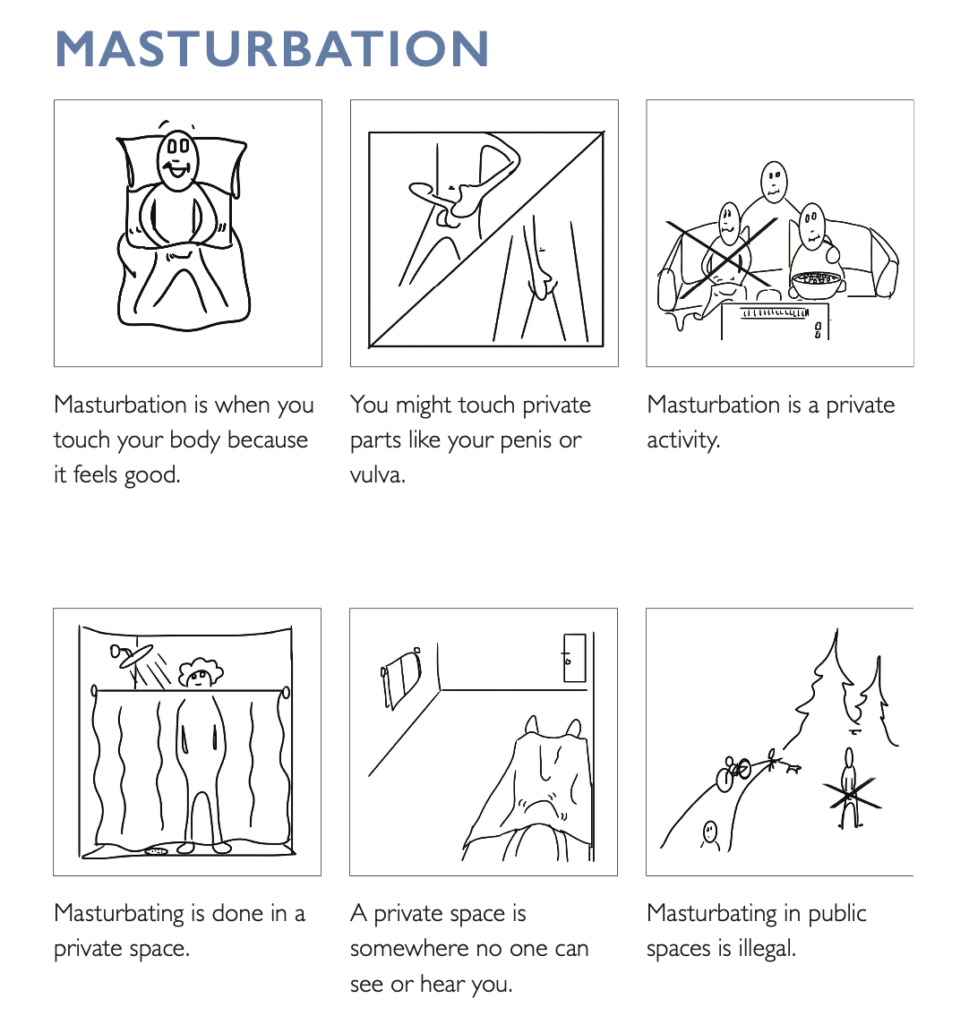Addressing Masturbation in the Classroom

Masturbation is a topic that we frequently facilitate a training, workshop or class about, and is frequently brought up by staff and caregivers as a topic they need support with. Masturbation is a healthy, normal part of many peoples’ sexual activity. Masturbation is when someone touches their private parts for pleasure. It is a great way for someone to learn more about their body, pleasure and sexuality. Masturbation is a private activity. It is done alone or with a consenting romantic partner. Masturbation becomes a problem when it is done in a public place like a classroom or workplace. It is illegal to masturbate in public. People who haven’t learned where and when it is appropriate to touch your private parts can get in a lot of trouble if they do it in public. As educators and parents we want to support our young people in having all the tools and knowledge to be safe in the world and part of that is teaching and talking about masturbation.
Why is talking or teaching about masturbation so awkward?
- There are a wide range of values, experience, comfort level (including cultural differences) around the topic of masturbation.
- Be gentle with yourself and others with this topic, many of us have experienced shame or trauma around this topic.
- Learning the boundaries or changing the behavior is a process.
- Exploring non-shaming responses may take time and practice.
- It is typically inappropriate to discuss masturbation in public.
- Masturbation/self-stimulation is a very NORMAL (common, age-appropriate) behavior – even for little ones. So while it can be awkward, it is very important to talk about!
Tips for Responding to Masturbation in the Classroom:
- Be direct about the behavior.
- Use non-reactive/non-shaming/non-judgmental responses.
- Work together with your team, include the Behaviorist and/or School Psychologist.
- DO NOT take this on yourself. Ask for help.
- Stopping these types of behaviors in the classroom is a process – but the ultimate goal is to eliminate the behavior at school or work. Part of eliminating the behavior in public is ensuring there is a private place at home if they wish to masturbate.
- Create a replacement behavior toolkit (other activities to keep hands busy).
- Consider other sensory needs like clothing, lighting, smells, and sounds that may be causing anxiety or stress, therefore intensifying the urge to self stimulate/soothe. Make environmental changes if beneficial.
- Include them on the team when making a plan to change this behavior.
- Ask the parents if there is a place at home that their child can have privacy.
- Remember that this might be a process for parents.
How to talk to parents about masturbation:
- Include them on the team when making a plan to change this behavior.
- Ask the parents if there is a place at home that their child can have privacy.
- Remember that this might be a process for pare
Masturbation is just like any other behavior we want to support our students in changing. It might take time, communication and support to reduce and change this behavior. Be patient with yourself, your students and your team.
Mad Hatter Wellness Resources:
We are here to help! Check out these resources to help facilitate conversations around masturbation, private and public behaviors and boundaries.
Boundaries Flip Book with Picture Symbols – Mad Hatter Wellness
Sexuality for All Abilities Social Stories – Mad Hatter Wellness
Keeping Relationships Healthy Kit – Mad Hatter Wellness
We also consult with schools and families who need support, feel free to contact us directly with questions:
